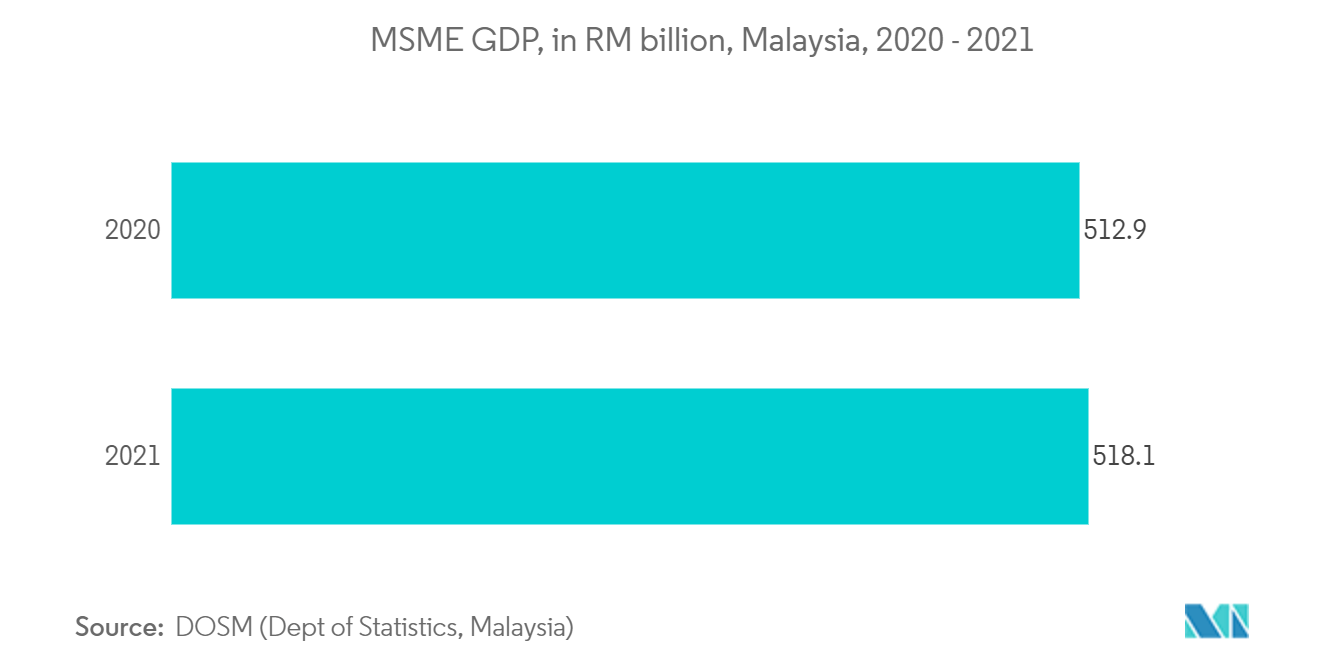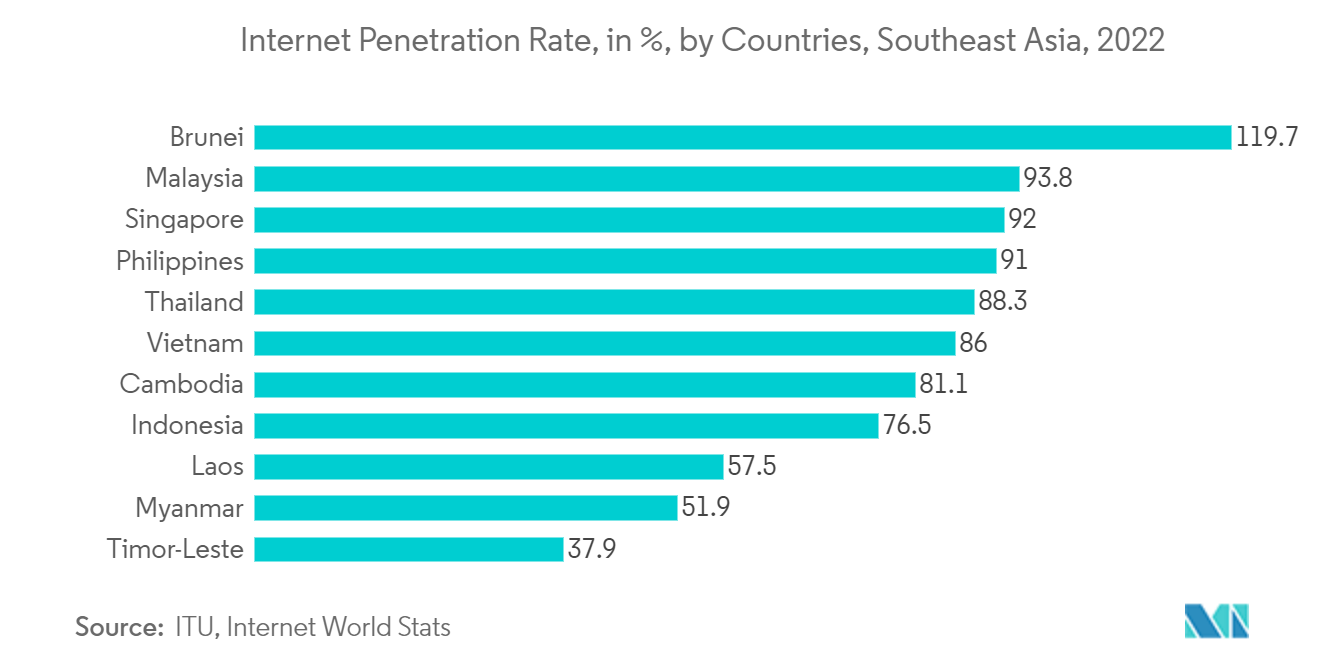Market Trends of Southeast Asia Credit and Risk Management Industry
High Inflow of Credit Needs, Owing to the Increase in Purchasing Power, Drives the Market
- The high inflow of credit needs owing to the increase in purchasing power of consumers is one of the significant drivers for the adoption of credit and risk management solutions in the region. Many major countries in the region, such as Singapore, Thailand, and Malaysia, attract the attention of global companies and investors willing to do business in the region. Singapore and Malaysia are among the world's fastest-growing economies. This allows them to reap the benefits of the region's growth. SMEs, coupled with the presence of multinational companies, are emerging as the driving force of Southeast Asian economies.
- Southeast Asian countries like Singapore offer a favorable business environment due to the country's sophisticated digital infrastructure, strong legal system, and vast talent pool. For instance, the country built a vibrant ecosystem featuring global R&D labs for leading Fortune 500 companies and over 150 venture capital funds, incubators, and accelerators. Further, according to Singapore's Budget 2023, the country will introduce a 15% minimum effective tax rate for large multinational enterprises (MNEs) based in Singapore from January 1, 2025.
- Moreover, after the COVID-19 pandemic, the economy has rebounded in Southeast Asia. The need for finance has been growing in micro, small, and medium enterprises (MSMEs) and large enterprises, thus propelling the demand for effective credit and risk management solutions in the lending sector companies to identify, measure, and mitigate the risks involved in financial decisions. For instance, according to Bank Negara Malaysia, SMEs are a key component of the Malaysian economy, contributing more than a third of the GDP. Banking institutions are the main source of financing for SMEs, providing more than 90% of total financing.
- Emerging businesses such as start-ups from the various sectors, such as telecom, retail, and automobile sector in the Southeast Asian economies, are expanding their operations, indulging in new product launches owing to increased purchasing power, thus significantly driving the need for credit. For instance, Yamaha Motor announced the expansion of its robotics business by establishing a new company in Singapore. The new company aims at growing its business in Southeast Asia and India, where demand for robots is rising.
- Similarly, other companies are launching new products to expand their businesses. Such factors are further driving credit needs, thus proliferating the demand for credit and risk solutions in the BFSI sector to enable the automation of lending, credit risk analysis, and the ongoing monitoring of financial risks involved in decision-making processes.
- Such instances are analyzed to boost the adoption of credit and risk management solutions in commercial lending sector businesses such as financial institutions to ensure that the market, operation, and credit risks are understood and effectively managed. The credit and risk management market is expected to witness significant growth owing to the high credit needs of enterprises and the favorable business environment offered for business growth by many countries in the region.

Cloud to be the Fastest Deployment Mode
- Risk management in the banking industry presents one of the most considerable opportunities for cloud computing, including financial (such as credit, market, and liquidity) and nonfinancial hazards. Cloud computing might offer significant advantages when risk management players are required to analyze larger volumes of data in a shorter time, frequently due to staffing and financial restrictions.
- Cloud-based solutions can be used to combine various data sources and systems swiftly and effectively by risk management teams. Some solutions do not require complex setups between a bank's systems and those of a third party since they feature conventional, user-friendly web-based interfaces. Moreover, due to economies of scale, cloud providers can provide modern, secure cloud ecosystems that are significantly more robust than customers operating their own systems. Several organizations stand to gain considerably from this. A well-implemented cloud strategy with efficient cloud risk management might increase cooperation, drive corporate development, and result in operational efficiency and higher customer satisfaction.
- Further, cybercrime and the attack surface of cybercriminals have expanded due to the rise in internet usage, online banking, and the digitization of financial services in Southeast Asia. The vast amount of data and money that financial institutions store, make them a potential target for cyber-attacks. The breach of the Singaporean bank is one of the most notable examples of the surge in cybercrime in financial institutions over the last few years. In response, last year, the Monetary Authority of Singapore emphasized risk management guidelines for financial institutions considering the use of public cloud services. The advisory suggested corporations develop a cloud risk management plan, considering elements like vendor lock-in and industry best practices, like the least privileged access principle and multi-factor authentication.
- Nevertheless, there are also difficulties with the cloud that must be considered, such as getting value for the money, managing cloud services, cloud governance, compliance, regulatory needs, and the potential for a skills gap in cloud management abilities. Thus, various agencies are finding ways to resolve issues that might drive market growth during the forecast period.
- The market is anticipated to register significant growth rates in the region due to the rising awareness of cloud benefits among end-users, thereby significantly driving adoption rates.


